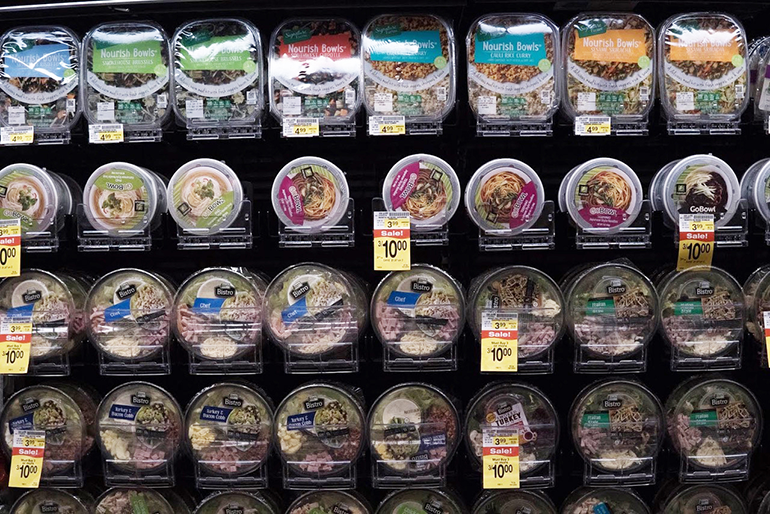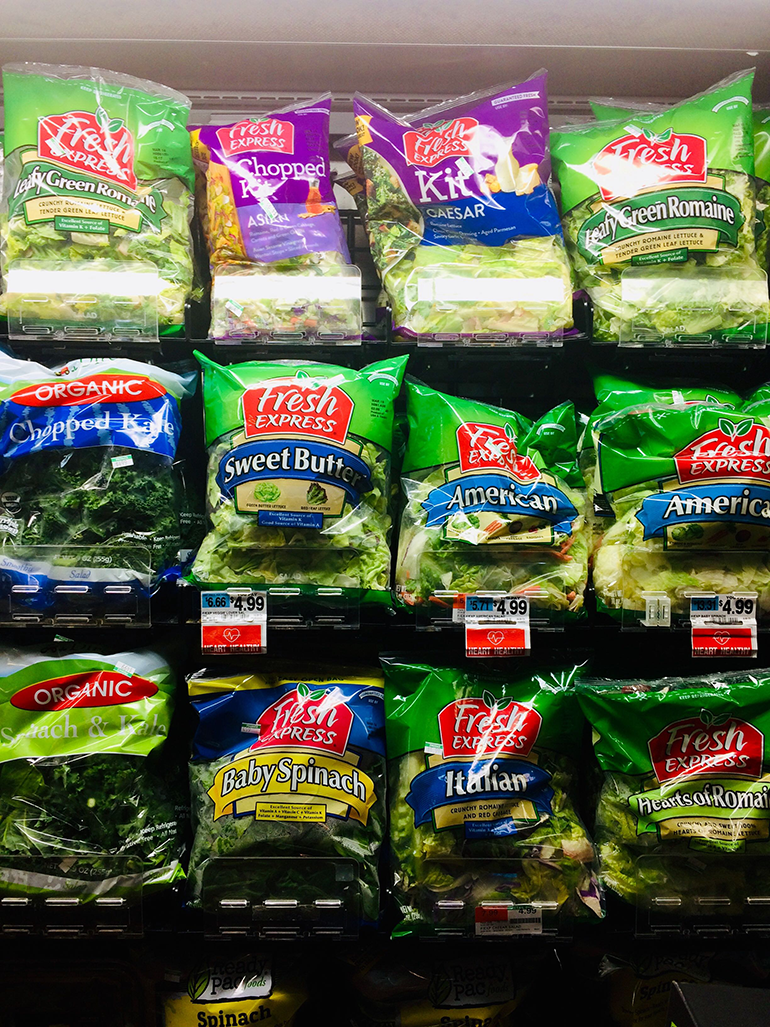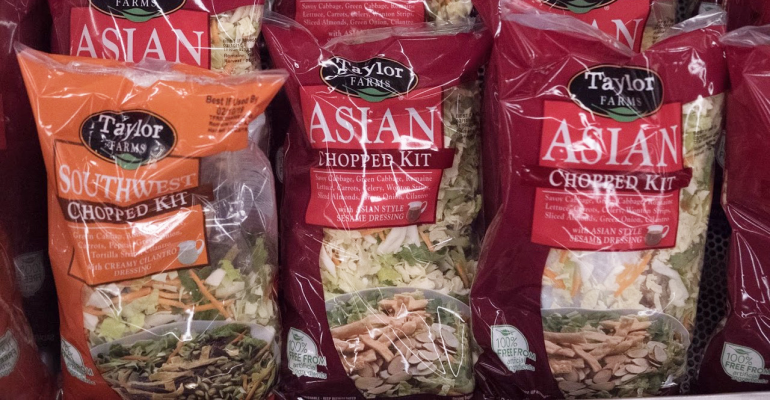While packaged salads have been around since 1986, it was in the mid-2000s when the segment really started to take off in supermarkets as more interesting greens made their way into the salads and people started to use baby spinach in so much more than just salads. Soon, arugula started to take off and baby kale gave the category another bump around 2010.
That’s why prepackaged salads are extremely popular today. According to the Nielsen Perishables Group, packaged salad sales have been increasing at a rate of approximately 6.5% every year since 2011, while IRI reports that household penetration for packaged salads is coming in at numbers higher than ever — 87.3% in the 52 weeks ending Dec. 31, 2018 — with stores reaping the benefits.
Healthy eating trends, freshness, value in the product versus buying bulk items and flavor variety are just some of the reasons for increased rings at the register.
“There has been a definite increase in packaged salads sales from year to year. Not only are more consumers trending toward the category, but there are more and more choices than ever before,” said Lou Scagnelli, director of produce for Krasdale Foods, an independent grocery wholesaler based in White Plains, N.Y. “The variety and selection of garden blends, kits, chopped blends and organic packaged salads has more than tripled over the last eight to 10 years.”
Nancy Cota, vice president, Own Brands for Albertsons Cos., Boise, Idaho, noted more and more people are gravitating to fresher foods, seeking convenience but not at the expense of quality and flavor, and packaged salads make it simple to eat higher-quality fresh food more frequently.
“Our Own Brands assortment delivers on premium convenience for different meal occasions and consumer trends, including conventional and organic offerings of complete single-serve salad bowls for immediate consumption, family-size clam shells of refreshed and seasonal lettuce varieties, cut greens for smoothies and complete chopped salad kits,” she said. “Our portfolio of produce prepackaged salads are up double digits in sales and volume in the last 52 weeks.”

Know thy customers
Although package salad sales are strong throughout most demographic areas, the salad of choice will vary based on the customer, Scagnelli explained, which is why a store must offer the right variety.
“The high school and college-aged group always seem to be on a healthy eating kick, while Millennials are dealing with the busy lifestyle and are always in search of the ‘quick and healthy’ meal solution,” he said. “Even the older generation has caught on. Packaged salads are under strict quality-control guidelines and are usually price-stable for most of the year, and quality and price are important factors for all ages.”
Sheryl Salazar, produce sales manager at Jewel Osco, based in Itasca, Ill., said the segment is strong because of the convenience it offers customers but not all categories are prospering.
“You have the blend categories, your basic tender leafs, lettuces and gardens, with the garden segment declining a bit, blend at a standstill and the segment really seeing a rise being the kit category where you take it home, throw it in a bowl and you quickly put it together,” she said. “The single-serve, grab-and-go for the lunch crowd, where you buy multiple bags for the week, is another category that is seeing positive growth with double-digit growth.”

Merchandising matters
Albertsons offers prepackaged salads in both the produce and deli departments for family stock-up and for immediate consumption. All prepackaged salads are merchandised as a destination in the produce department with a prominent salad wall and well, making it easy to shop different varieties and stock up.
“We surprise and delight shoppers with grab-and-go premium offerings in deli foodservice for immediate consumption,” Cota said. “Since packaged salads are so popular, it’s important to ensure that the sets are refreshed and restocked regularly as to not miss out on sales.”
At Jewel Osco, the strategy is to encourage multiple purchases and offer “buy more, save more” deals such as 3-for-$10 so consumers pantry-load for the week.
“We try to merchandise them in a promotional, refrigerated endcap, maybe with some of our meat department items,” Salazar said. “Any additional refrigerated space we have, we put our packaged salads in.”
Scagnelli shared that the best way to display packaged salads is at the start of the lettuce and greens case, before the wet greens.
“The best presentation is achieved when using a rack specially designed for packaged salads,” he said. “This keeps them neat and clean and allows quick and easy rotation. Shelf talkers and proper signage are always a plus.”
Cross-merchandising of complementary items, he added, is always a winner.
“Depending on the amount of room and size of your salad rack, items such as dressings, grape tomatoes, mushrooms, croutons and salad toppers are a great way to increase sales,” he said. “I do believe the most important factor is freshness. You must keep the items on your salad rack fresh and properly rotated. Leaving even one bad package on the rack can cause a customer to walk away, resulting in lost sales of both the packaged salad and complementary items.”





